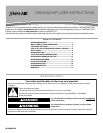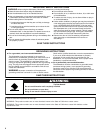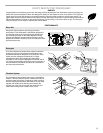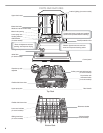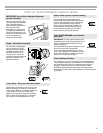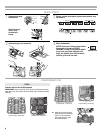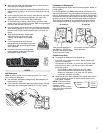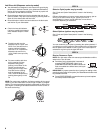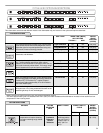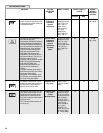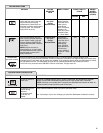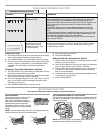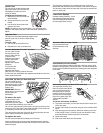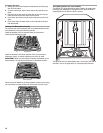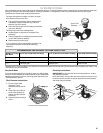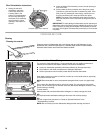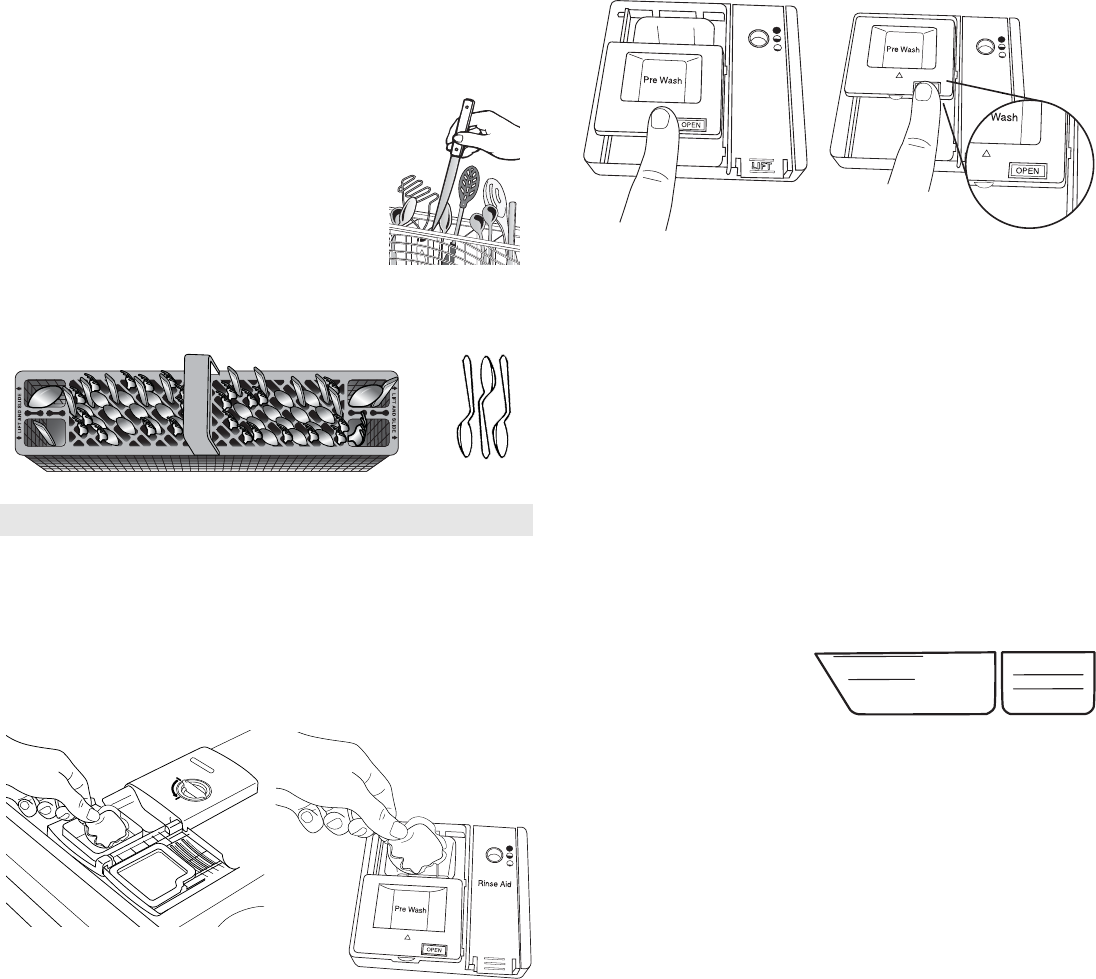
7
■ Make sure that when the dishwasher door is closed no items
are blocking the detergent dispenser.
■ Items should be loaded with soiled surfaces facing down and
angled toward the spray. This will improve cleaning and drying
results.
■ Avoid overlapping items like bowls or plates that may trap food.
■ Place plastics, small plates and glasses in the upper rack.
Wash only plastic items marked “dishwasher safe.”
■ To avoid thumping/clattering noises during operation: Load
dishes so they do not touch one another. Make sure lightweight
load items are secured in the racks.
■ Improper loading can cause dishes to be chipped or damaged.
When loading glasses or mugs, it is best to load these items in
between rows of tines instead of loading them over tines, as
shown.
■ When loading silverware, always place
sharp items pointing down and avoid
“nesting”. Spray cannot reach nested
items.
■ If your silverware does not fit into the
designated slots, lift and slide covers off to
remove them. Mix silverware types to keep
them separated.
■ Use slots in the covers and suggested
loading patterns to keep your silverware
separated for optimum wash.
Add Detergent
NOTE: If you do not plan to run a wash cycle soon, run a rinse
cycle. Do not use detergent.
■ Use automatic dishwasher detergent only. Add detergent just
before starting a cycle.
■ Fresh automatic dishwasher detergent results in better cleaning.
Store tightly closed detergent container in a cool, dry place.
Premeasured Detergents
Many detergents now come in several forms (gel packs, tablets, or
powder packs).
It is recommended to use tablets and packs for convenience and
improved performance. They have been proven better than powder,
liquid or gel detergents at reducing filming on dishes. Using tablets
and packs over time will start to reduce or eliminate white film. Also,
by using a rinse aid, you can minimize repeat buildup of white film.
These forms are suitable for all hardness and soil levels. Always
place detergents in the main compartment and slide lid to close.
Powders and Gels
■ The amount of detergent to use depends on:
How much soil remains on the items - Heavily soiled loads
require more detergent.
The hardness of the water - If you use too little in hard water,
dishes won't be clean. If you use too much in soft water,
glassware will etch.
Soft to Medium Water (0-6 grains per U.S. gallon)
[typical water softener water and some city water]
Medium to Hard Water (7-12 grains per U.S. gallon)
[well water and some city water]
■ Depending on your water hardness, fill the Main Wash section
of the dispenser as shown. Fill the Pre-Wash section to the
level shown, if needed.
NOTE: Fill amounts shown
are for standard powdered
detergent. Follow
instructions on the package
when using other dishwasher
detergent types.
STEP 2
SLIDE
To close lid To open lid
Place selected detergent in
the dispenser. Place finger,
as shown, and slide lid closed.
Press firmly until it clicks.
Push OPEN, as shown, and the
lid will slide open.
S
LIDE
SLIDE
Soft Water
Hard Water
Soft Water
Hard Water
Main Wash Pre-Wash



